
Plant dormancy is a crucial stage in the life cycle of many plants, allowing them to survive during unfavorable environmental conditions. During dormancy, growth and development are temporarily stopped. This state is often a response to environmental triggers, which can vary depending on the plant species and its native habitat. Understanding the environmental factors that influence plant dormancy can help gardeners and botanists alike manage plant health more effectively.
What is Plant Dormancy?
Plant dormancy refers to a period where a plant suspends its growth processes. This is an adaptation mechanism that helps plants conserve energy and survive periods of stress, such as winter cold or summer drought. Dormancy is not just a lack of growth but a complex physiological state where metabolic processes slow down, and growth ceases until conditions improve.
Types of Plant Dormancy
There are generally two types of dormancy: endodormancy and ecodormancy. Endodormancy, or true dormancy, occurs when a plant is dormant due to internal physiological cues. Ecodormancy, on the other hand, is triggered by external environmental factors, such as temperature changes or water availability.
Environmental Factors Influencing Dormancy
Several environmental factors play a crucial role in inducing and breaking dormancy in plants. Understanding these factors can be vital for effective plant cultivation and management.
Temperature
Temperature is one of the most significant environmental cues for dormancy. Cold temperatures often trigger dormancy in temperate plants, while tropical plants may enter dormancy during high heat. The duration and intensity of temperature changes can determine when a plant enters and exits dormancy.
Water Availability
Water stress is another critical factor. In arid regions, plants may enter dormancy during dry seasons to conserve water. The availability of moisture can signal plants to break dormancy, resuming growth when water is abundant.
Light
Photoperiod, or the length of day and night, also influences dormancy. Some plants require long nights (short days) to trigger dormancy, while others need short nights (long days) to end dormancy. This adaptation is particularly common in plants from regions with significant seasonal changes in day length.
Nutrient Availability
Nutrient scarcity can also induce dormancy in plants. When soil nutrients are low, plants may halt growth to conserve resources. This response ensures that the plant does not expend energy on growth that cannot be supported by the available nutrients.
Biotic Factors
Biotic factors such as herbivory and diseases can also affect plant dormancy. Plants may enter a dormant state to avoid damage from pests and pathogens, resuming growth when the threat diminishes.
Breaking Dormancy
Breaking dormancy is as complex as entering it. It often requires the reversal of the environmental triggers that caused dormancy in the first place. For instance, increasing temperatures and longer daylight hours in spring can signal temperate plants to resume growth. Similarly, the onset of rains in dry regions can break dormancy in desert plants.
Conclusion
Understanding plant dormancy and its environmental triggers is essential for anyone involved in plant care or cultivation. By recognizing the signs of dormancy and the factors that influence it, gardeners and farmers can better anticipate plant needs and optimize growth conditions. Whether dealing with houseplants or agricultural crops, knowledge of dormancy allows for more informed decisions about watering, feeding, and timing of other care activities, ultimately leading to healthier plants.
Plant dormancy is a crucial stage in the life cycle of many plants. Dormancy allows plants to survive during unfavorable environmental conditions. Temperature, water availability, light, and nutrient availability are key environmental factors influencing dormancy. Breaking dormancy requires the reversal of the environmental triggers that caused it. Understanding plant dormancy helps gardeners and botanists manage plant health effectively. 
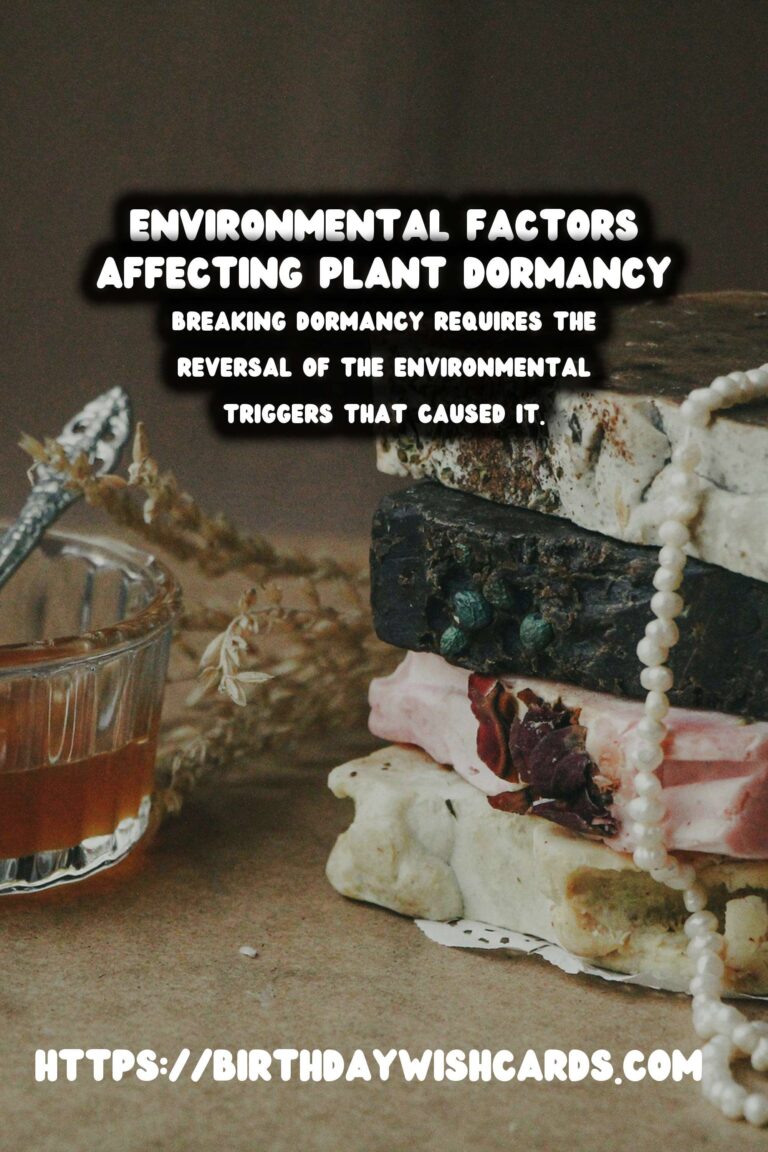
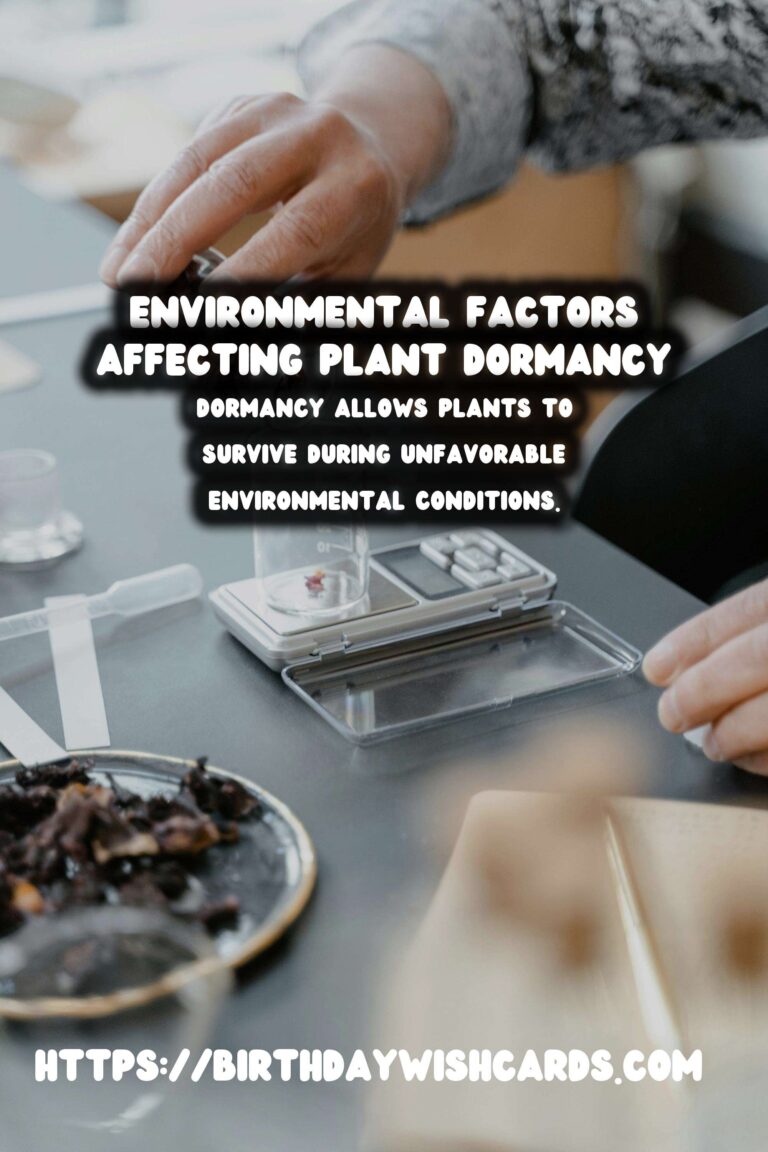


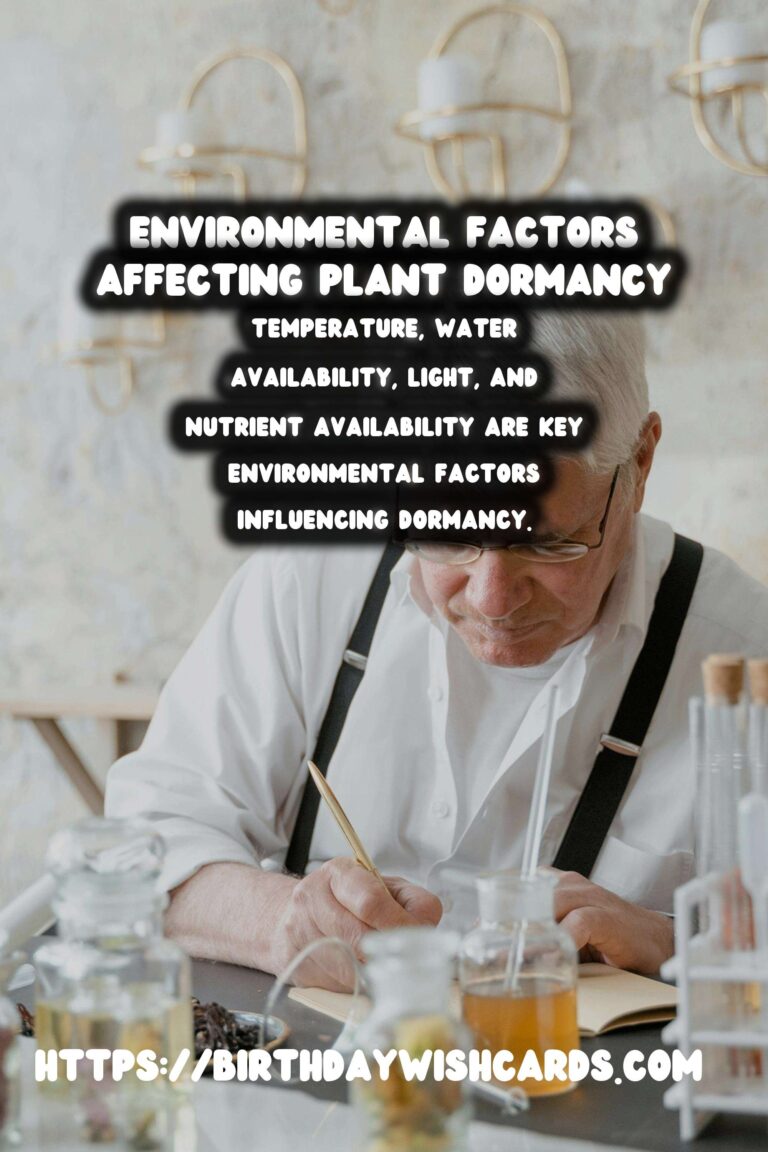
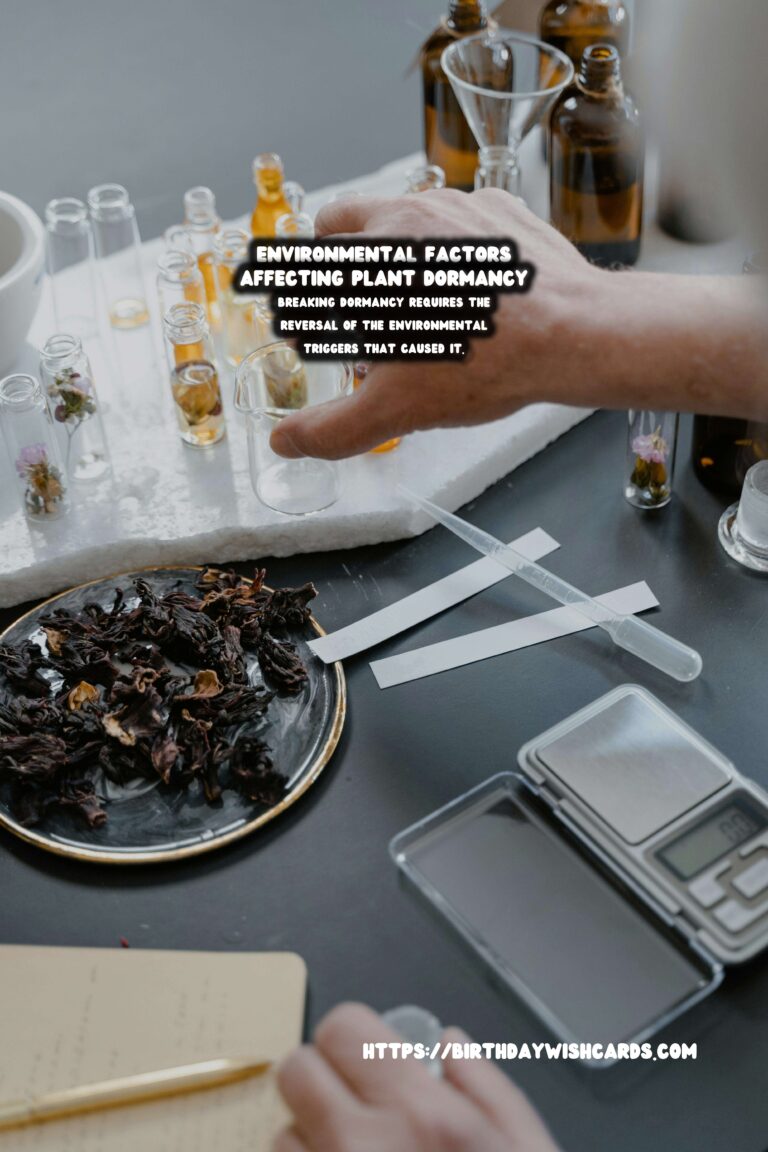
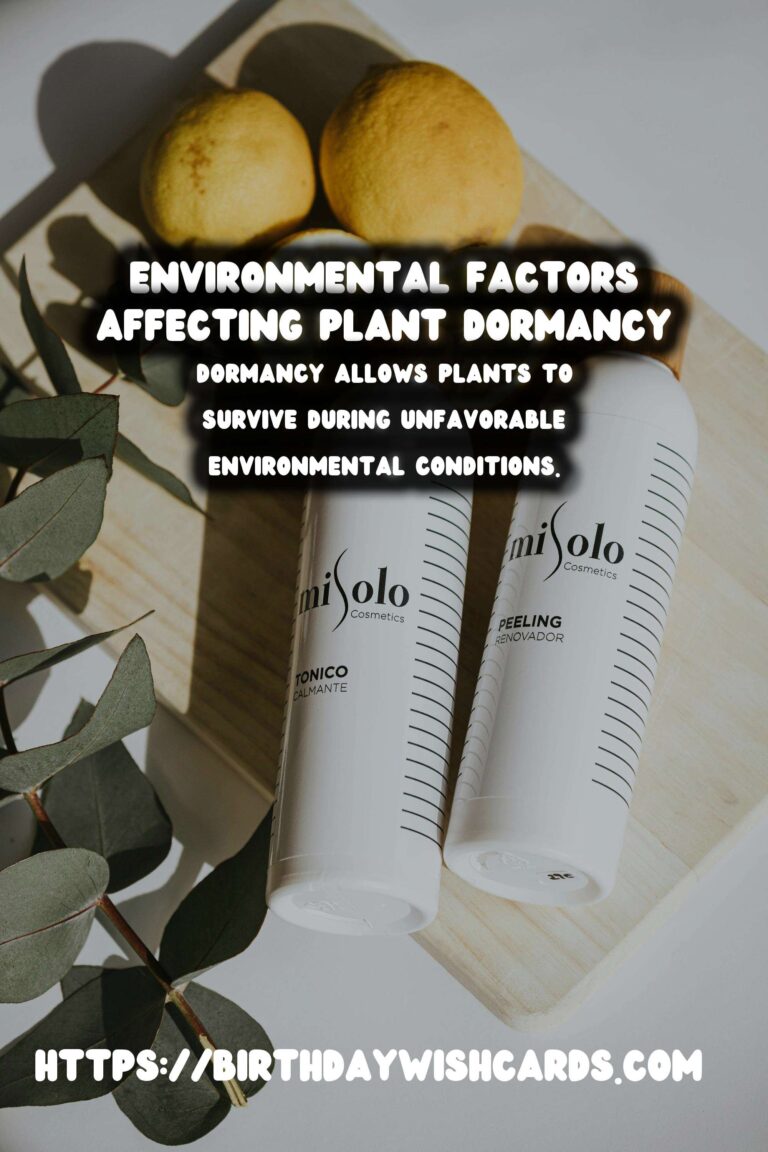

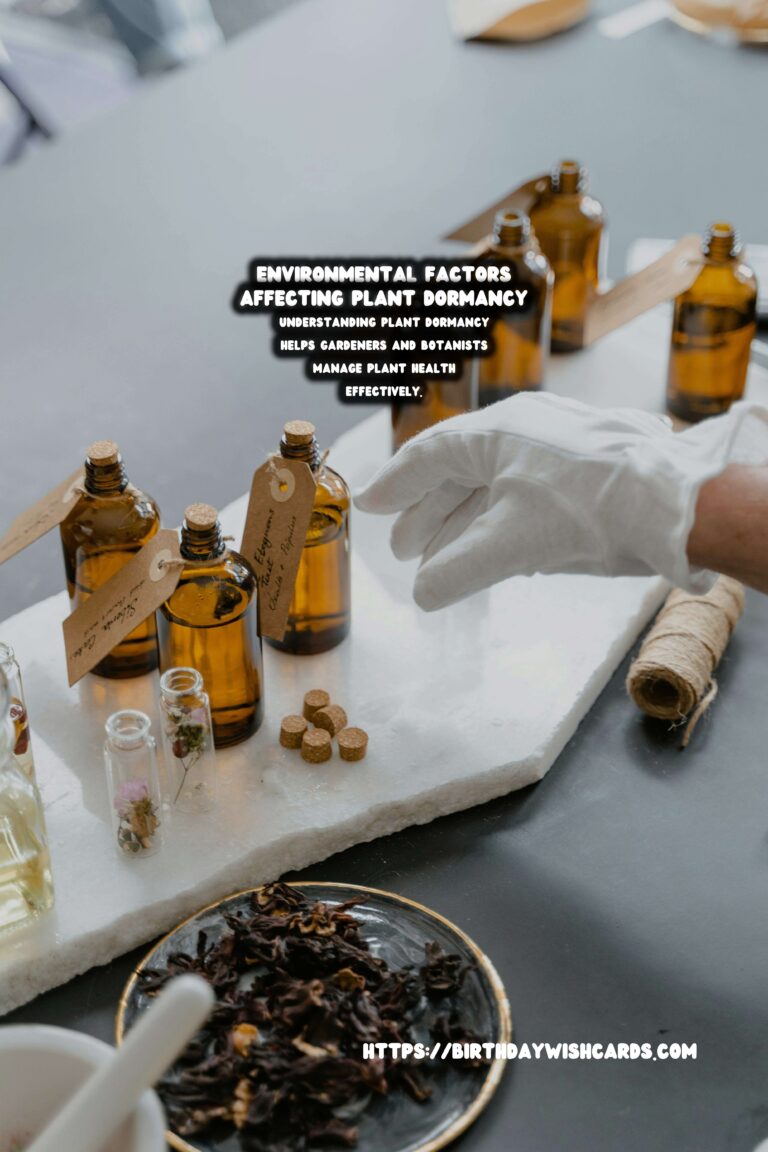
#PlantDormancy #Gardening #Botany #EnvironmentalFactors #PlantCare




